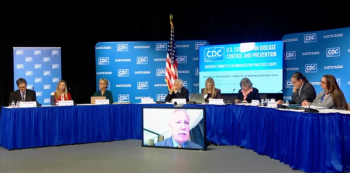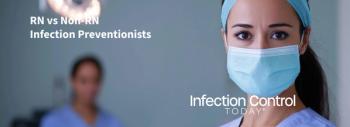
University Partner Company is Designing New Pathogen ID Device
A company hatched as a partnership between The University of Alabama in Huntsville and chemical engineering professor Dr. Krishnan Chittur is in the design phase for a device that can provide physicians one-hour pathogen testing capabilities.
Dr. Krishnan Chittur, left, at the HudsonAlpha Institute for Biotechnology with Paula Koelle, one of the research scientists at GeneCapture.
A company hatched as a partnership between the University of Alabama in Huntsville and chemical engineering professor Dr. Krishnan Chittur is in the design phase for a device that can provide physicians one-hour pathogen testing capabilities.
GeneCapture, a resident company at the HudsonAlpha Institute for Biotechnology in Huntsville, Ala., has proven its patented technique in the lab and is now developing an automated prototype for higher throughput testing. The product involves unique DNA probes that capture a genetic signature quickly, and thus can be used to identify the presence of one of many specific pathogens in a sample, be it human, plant, food or animal. The company has recently collaborated with Huntsville Hospital in a validation study using human samples.
Its one thing to say you can do it, and to show it in the lab, but its another thing to develop it for manufacturing and third party use. Chittur says. How do you make it reliable, simple and rugged? We are designing this to be generic enough so that it can be used in a variety of clinical tests and research applications.
We want to get a prototype perfected and begin more testing, says Chittur. When used as a medical device, the unit will require Food and Drug Administration (FDA) clearance. Other applications will not require certification in order to begin commercial sales. So far, the device has successfully detected 16 different pathogens, including E. coli bacteria, synthetic severe acute respiratory syndrome (SARS) virus, Lyme disease bacteria and Methicillin-resistant Staphylococcus aureus (MRSA) bacteria.
MRSA and other hospital-acquired antibiotic resistant infections are particular areas of focus for GeneCapture. Highly sensitive performance is necessary because so many bacteria that reside in the human body are beneficial.
Our job is to pick out that one problem bacteria or virus that is causing infection, says Chittur.
Physicians are often faced with a modern-day needle in the haystack search when presented with a patient exhibiting a certain symptom set. The doctor may draw blood or take swab samples and send them off to the laboratory, but while waiting for the results to return, the patient may be treated based on an assessment of observed symptoms. Those assessments are less accurate than test results, sometimes causing incorrect or overtreatment.
Suppose I told you to go look for a needle in a haystack, says Chittur. Maybe theres a whole barn full of hay, and you have to go and find that needle. How would you do it? Would you go through it one piece at a time? Now imagine if I handed you an inexpensive, portable, powerful magnet to help you find that needle.
Chittur is a cofounder of GeneCapture, the company formed to pursue the commercialization of the technology patented by Chittur and three other scientists while performing early research at UAHuntsville.
Right now, we are trying to answer the question, Can I detect the presence of a particular pathogen within one hour of getting a sample? Chittur says. Because when you go to the doctor, you have the pathogen in you at that time. I am not a biologist. I am an engineer, a problem-solver. If the pathogen is in your body, why cant we find it fast?
Rather than traditional tests that require cell culturing or those that look for antibodies or other reactive agents created by the body in response to the disease, Chittur uses stem loop DNA probes designed to bind specifically to the DNA in a targeted pathogen. Its a direct proof of the presence of the causative agent, rather than indirect evidence.
The probe and the pathogen bind through the hydrogen bond of complimentary DNA pairs, the bond that gives DNA its distinctive double-helix appearance. Once a probe binds to a molecule, the probe will fluoresce, easily identifying the culprit.
What weve done is design a magnet for genes, Chittur says of the stem loop DNA probes. In one challenging experiment, we took sludge samples from the Huntsville Wastewater Authority and we asked, Can I pick out a specific bacterium from that very complex sample? The answer was yes, we have done that.
The potential applications for a quick pathogen test range beyond the physicians office to include hospital screening, veterinary medicine, food testing and environmental assessment, Chittur says. Our entire team is quite passionate about this product we know how important it is.
Recent work has been published as Dendron-modified surfaces provide an ideal environment for stemloop DNA probes (Jonas Boateng, Joel Peek, Robert Zahorchak, Krishnan Chittur; Analytical Biochemistry, Volume 430, Issue 1, 1 November 2012, Pages 39-44) and Novel stemloop probe DNA arrays: Detection of specific acetotrophic 16S ribosomal RNA signatures (Jonas Boateng, Robert Zahorchak, Joel Peek, Krishnan Chittur; Analytical Biochemistry, Volume 435, Issue 1, 1 April 2013, Pages 60-67).
Source: University of Alabama Huntsville
Newsletter
Stay prepared and protected with Infection Control Today's newsletter, delivering essential updates, best practices, and expert insights for infection preventionists.






